Prayers of thanks and special thanksgiving ceremonies are common among almost all religions after harvests and at other times. The Thanksgiving holiday's history in North America is rooted in English traditions dating from the Protestant Reformation. It also has aspects of a harvest festival, even though the harvest in New England occurs well before the late-November date on which the modern Thanksgiving holiday is celebrated.
In the English tradition, days of thanksgiving and special thanksgiving religious services became important during the English Reformation in the reign of Henry VIII and in reaction to the large number of religious holidays on the Catholic calendar. Before 1536 there were 95 Church holidays, plus 52 Sundays, when people were required to attend church and forego work and sometimes pay for expensive celebrations. The 1536 reforms reduced the number of Church holidays to 27, but some Puritans wished to completely eliminate all Church holidays, including Christmas and Easter. The holidays were to be replaced by specially called Days of Fasting or Days of Thanksgiving, in response to events that the Puritans viewed as acts of special providence. Unexpected disasters or threats of judgement from on high called for Days of Fasting. Special blessings, viewed as coming from God, called for Days of Thanksgiving. For example, Days of Fasting were called on account of drought in 1611, floods in 1613, and plagues in 1604 and 1622. Days of Thanksgiving were called following the victory over the Spanish Armada in 1588 and following the deliverance of Queen Anne in 1705. An unusual annual Day of Thanksgiving began in 1606 following the failure of the Gunpowder Plot in 1605 and developed into Guy Fawkes Day on November 5.
In many American households, the Thanksgiving celebration has lost much of its original religious significance; instead, it now centers on cooking and sharing a bountiful meal with family and friends. Turkey, a Thanksgiving staple so ubiquitous it has become all but synonymous with the holiday, may or may not have been on offer when the Pilgrims hosted the inaugural feast in 1621. Today, however, nearly 90 percent of Americans eat the bird—whether roasted, baked or deep-fried—on Thanksgiving, according to the National Turkey Federation. Other traditional foods include stuffing, mashed potatoes, cranberry sauce, and pumpkin pie. Volunteering is a common Thanksgiving Day activity. Communities often hold food drives and host free dinners for the less fortunate.
Parades have also become an integral part of the holiday in cities and towns across the United States. Presented by Macy’s department store since 1924, New York City’s Thanksgiving Day parade is the largest and most famous, attracting some 2 to 3 million spectators along its 2.5-mile route and drawing an enormous television audience. It typically features marching bands, performers, elaborate floats conveying various celebrities and giant balloons shaped like cartoon characters.
Beginning in the mid-20th century and perhaps even earlier, the president of the United States has “pardoned” one or two Thanksgiving turkeys each year, sparing the birds from slaughter and sending them to a farm for retirement. Several U.S. governors also perform the annual turkey pardoning ritual, too
THANKSGIVING DAY HISTORY
Plymouth
In September 1620, a small ship called the Mayflower left Plymouth, England. The ship carried 102 passengers—an assortment of religious separatists seeking a new home where they could freely practice their faith and other individuals lured by the promise of prosperity and land ownership in the New World. After a treacherous and uncomfortable crossing that lasted 66 days, they dropped anchor near the tip of Cape Cod, far north of their intended destination at the mouth of the Hudson River. One month later, the Mayflower crossed Massachusetts Bay, where the Pilgrims, as they are now commonly known, began the work of establishing a village at Plymouth.
Throughout that first brutal winter, most of the colonists remained on board the ship. They suffered from exposure, scurvy, and outbreaks of contagious disease. Only half of the Mayflower’s original passengers and crew lived. When the remaining settlers moved ashore in March, they received an astonishing visit. An Abenaki Indian greeted them in English. Several days later, he returned with another Native American named Squanto.
Squanto was a member of the Pawtuxet tribe, had been kidnapped by an English sea captain and sold into slavery before escaping to London and returning to his homeland on an exploratory expedition. Squanto taught the Pilgrims, weakened by malnutrition and illness, how to cultivate corn, extract sap from maple trees, catch fish in the rivers and avoid poisonous plants. He also helped the settlers forge an alliance with the Wampanoag, a local tribe. The alliance would endure for more than 50 years, and tragically remains one of the sole examples of harmony between European colonists and Native Americans.
First Thanksgiving
In November 1621, after the first successful corn harvest, Governor William Bradford organized a celebratory feast. He invited a group of the fledgling colony’s Native American allies, including the Wampanoag chief Massasoit. Now remembered as American’s “first Thanksgiving”—although the Pilgrims themselves may not have used the term at the time—the festival lasted for three days. While no record exists of the historic banquet’s menu, the Pilgrim chronicler Edward Winslow wrote in his journal that Governor Bradford sent four men on a “fowling” mission in preparation for the event and that the Wampanoag guests arrived bearing five deer. Historians suggest that many of the dishes likely used traditional Native American spices and cooking methods. Because the Pilgrims had no oven and the Mayflower’s sugar supply had dwindled by the fall of 1621, the meal did not feature pies, cakes or other desserts, which have become a hallmark of contemporary celebrations.
The Next Thanksgivings
Pilgrims held their second Thanksgiving celebration in 1623 to mark the end of a long drought that had threatened the year’s harvest and prompted Governor Bradford to call for a religious fast. Days of fasting and thanksgiving on an annual or occasional basis became common practice in other New England settlements as well. During the American Revolution, the Continental Congress designated one or more days of thanksgiving a year. In 1789 George Washington issued the first Thanksgiving proclamation by the national government of the United States; in it, he called upon Americans to express their gratitude for the happy conclusion to the country’s war of independence and the successful ratification of the U.S. Constitution. His successors John Adams and James Madison also designated days of thanks during their presidencies.
In 1817, New York became the first of several states to adopt an annual Thanksgiving holiday officially; each celebrated it on a different day, however, and the American South remained largely unfamiliar with the tradition.
1859 – Charles Darwin publishes On the Origin of Species, the anniversary of which is sometimes called "Evolution Day"
1944 – World War II: Bombing of Tokyo – The first bombing raid against the Japanese capital from the east and by land is carried out by 88 American aircraft.
1950 – The "Storm of the Century", a violent snowstorm, takes shape on this date before paralyzing the northeastern United States and the Appalachians the next day, bringing winds up to 100 mph and sub-zero temperatures. Pickens, West Virginia, records 57 inches of snow. 353 people would die as a result of the storm.
1963 – Lee Harvey Oswald, the alleged assassin of President John F. Kennedy, is murdered two days after the assassination, by Jack Ruby in the basement of Dallas police department headquarters. The shooting happens to be broadcast live on television
1976 – The 1976 Çaldıran-Muradiye earthquake in eastern Turkey kills between 4,000 and 5,000 people.
And births this date include..
1784 – Zachary Taylor, American general and politician, 12th President of the United States (d. 1850)
1864 – Henri de Toulouse-Lautrec, French painter (d. 1901)
1917 – Howard Duff, American actor (d. 1990)
1948 – Steve Yeager, American baseball player
1968 – Todd Beamer, American passenger on United Airlines Flight 93 (d. 2001) HERO!!!!!
1978 – Katherine Heigl, American actress and producer
From one’s daily vitamin allowance containing:
- 13 % B2
- .25 % niacin
- 150% vitamin B12
- phosphorus
- calcium
- potassium
- iron
- selenium
- omega-3 fatty acids
- vitamin D
- protein
– Omega 3 fatty acids reduce the occurrence of cardiovascular disease and regular consumption may reduce the likelihood of developing Alzheimer’s disease and can even boost brain function as well as help lower blood sugar levels.
Sardine oil is used in the manufacturing of paint, varnish and linoleum.
HOW TO OBSERVE
- Try sardines on a salad. Mash them up and mix them with some Caesar dressing for a start. Add some extra croutons if that improves the experience.
- Toss them with pasta and a spicy marinara sauce.
- Grill them with olive oil. Add lemon, garlic, and tarragon.


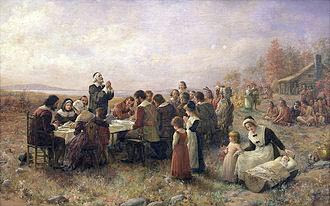



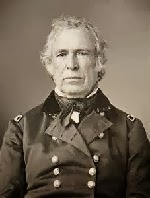

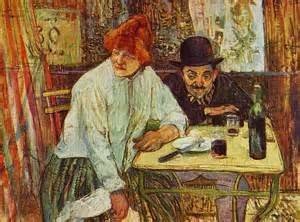
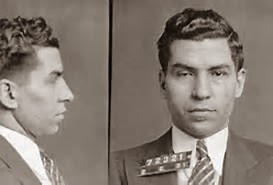
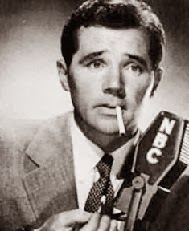





1 comment:
A blessed Thanksgiving to you.
I am going to totally ignore it being sardine day :-)
Thank you for the reference to Leiden. I did not know the connection to our Thanksgiving. Next time I travel to the Netherlands, it will be a focus. God’s blessings to you, Lydia.
Post a Comment